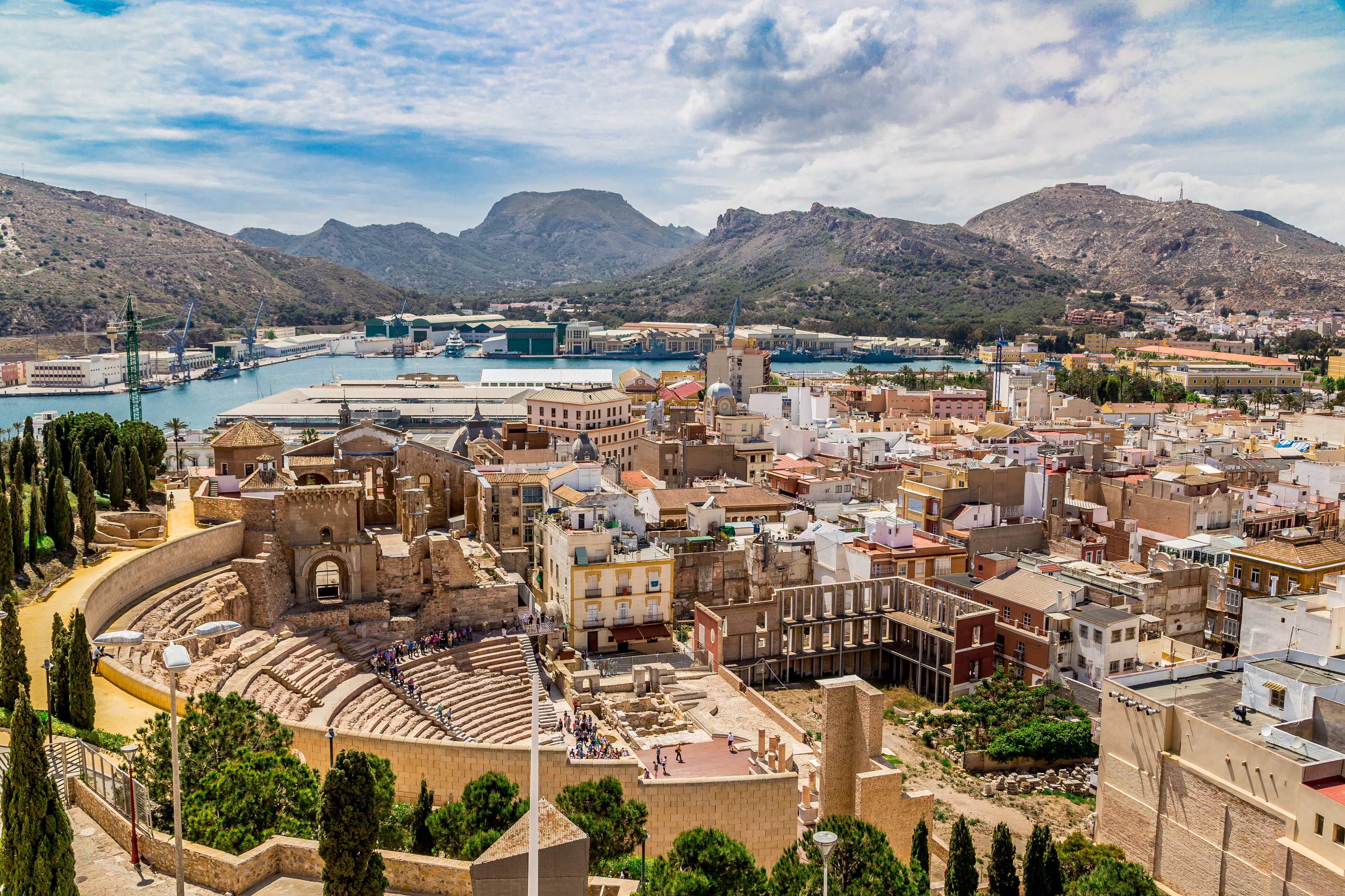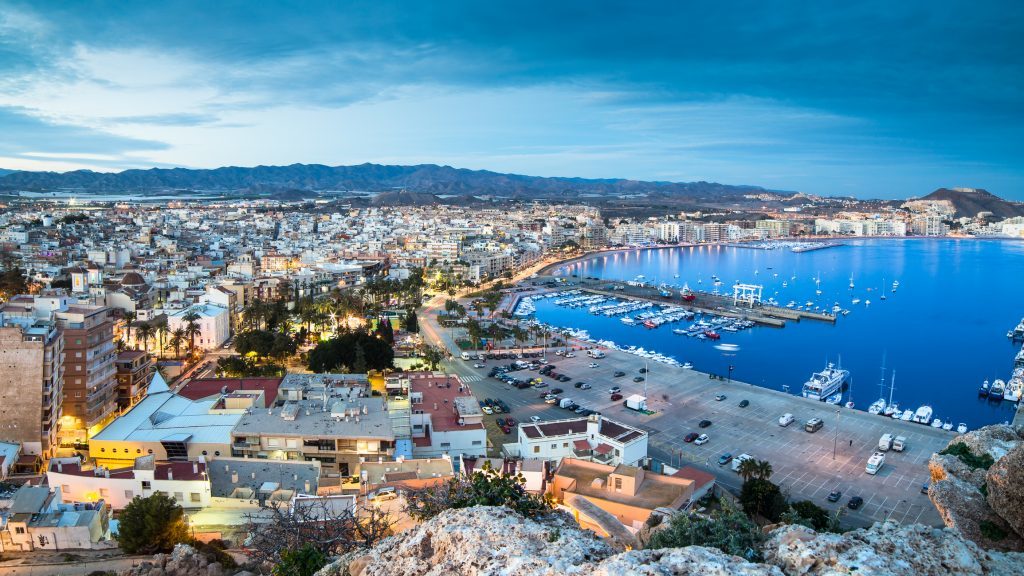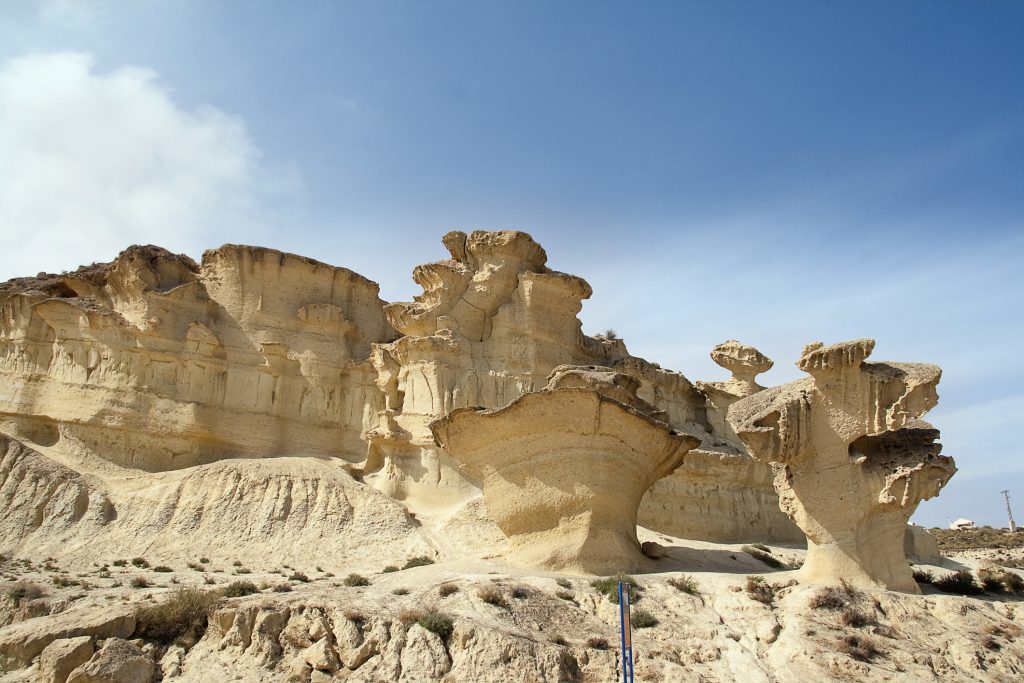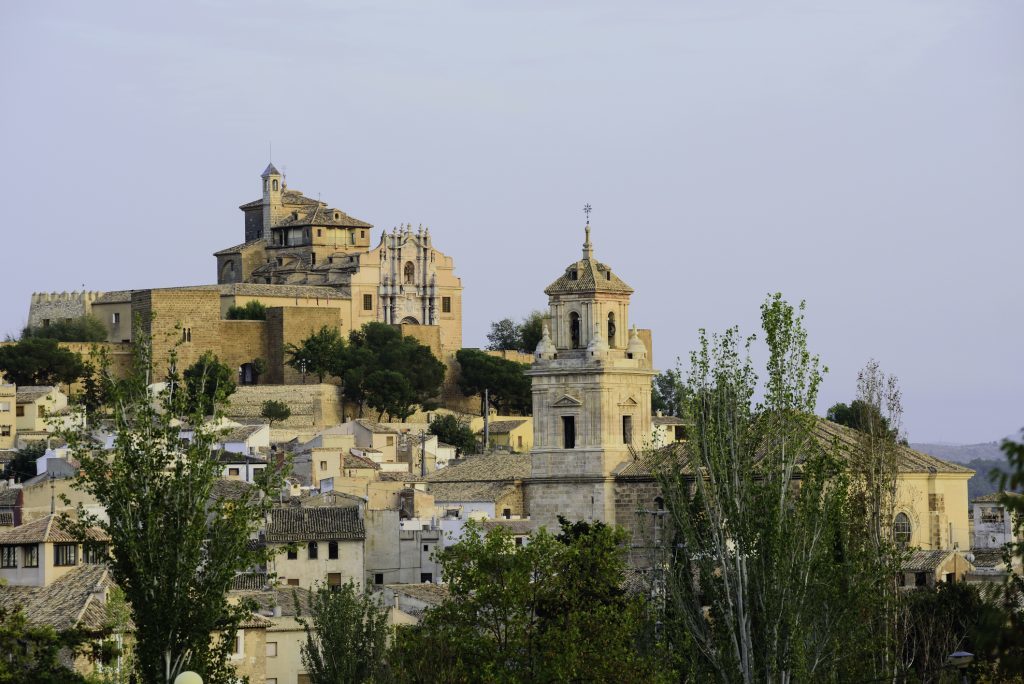
THE ‘Arrivals’ sign might as well read ‘Welcome to Mars’, because there are craters quarried from the dry earth and mountains piled up in rows like shark teeth here.
But the city of Murcia is a welcome contrast thanks to the Moors, Islamic settlers who controlled southern Spain in the middle ages.
Their monuments, mosques and palaces are ruins now, but their real legacy is seen from the top of the city’s Cathedral: a green belt of land stretching all the way to the rocky perimeter, and made possible by their mastery of irrigation.
This is Spain’s prize allotment, the plazas and courtyards of Murcia’s old town are filled with orange and lemon trees, and the city’s tapas is celebrated for its quality and freshness.
A simple tomato salad is a treat in itself but my favourite dish is the Marinera – a pâté of tuna, potato, egg and coleslaw – spread on a looped breadstick and topped with anchovies.
La Tapa bar is the best place for it.
I scoff several helpings along with mounds of pescaditos fritos (fried baby fish) and grilled octopus, all washed down with the local Verdejo wine.
The next day, keen to work off a tapas tummy, I join a bicycle tour along the Vía Verde del Noroeste, a disused railway running from Murcia to Caravaca de la Cruz.
Despite gentle gradients my guide Augustine, more used to cycling across the Mongolian desert, sets a breathless pace but once we get to Caravaca, a cool cerveza in the shadow of the hilltop, Basilica soon restores my spirit.
This historic town is the fifth holy city of the catholic church famous in the region for its crazy, yet brilliant, ‘Wine Horse Festival’.
Each year thousands of people line the streets to watch horses, decked out in tapestries and each flanked by a team of four runners, race up the winding streets to the basilica through the cheering crowds. The fastest team wins.
I spend the night at the Parador hotel in picturesque Lorca. The Paradores group is known for its hand-picked locations and this one doesn’t disappoint.
Perched above the town, within the 9th-century castle walls, its rooms offer contemporary luxury and a spectacular view, once the privilege of Emirs and princes. After two days touring the interior I’m more than ready for some, R&R by the sea.
But the beach will have to wait because my first port of call is Aguilas, a party town particularly proud of its carnival. I’m assured it’s the most fun to be had in February this side of Rio.
I take a kayak out along the coast, past the bird-shaped rock which gives Aguilas (Spanish for ‘eagle’) its name, and poke about the coves and gated caves where women once weaved dry esparto grass into baskets and espadrilles. All along the coastline is evidence of industry and empire, from the Romans to the British.
I discover Aguilas’ best kept secret at Playa del Hornillo, a railroad pier built in 1903 by British industrialists to help export iron ore.
Further east is the Salt Fish Factory in Puerto de Mazarron where the Roman trade in dried fish and lucrative ‘garum’ (a pungent delicacy amounting to rotten fish sauce) made the region rich two-thousand years ago.
I spend my final day searching for dolphins off the shores of Mazarron with the lovely Capitan Jose.
I’ve spent many fruitless hours over the years in search of exotic animals: tigers, elephants, whales – you name it, I haven’t seen it. So my hopes were not high.
Imagine my surprise when two hours in, without a whisper of a dorsal fin, I hear shouts of “madre mia” coming from the crow’s nest.
This was surely not your everyday porpoise.
In fact, Jose had spotted a Sperm whale!
Moby Dick, as far as I was concerned, was barely 100 metres from the boat.
As if that wasn’t excitement enough, the magnificent creature then launched itself like a submarine missile, clean out of the water. Not once, but three times.
It was too much. The whole crew went berserk: no one had seen a Sperm whale ‘breach’ before.
Who knew they even had Sperm whales in the Med?
For me that pretty much sums up Murcia: an unassuming, under-explored region that can suddenly conjure out of thin air, or dry rocks, or the calm azure sea, the experience of a lifetime.
Another place of interest is The Roman Salting Factory in Mazarron, which is free to visit. For more information got to visitamazarron.com
Facts
Monarch operates flights to Alicante from Birmingham, London Gatwick, London Luton, Leeds Bradford and Manchester airports with fares, including taxes, from £59 one way (£160 return) monarch.co.uk
Hotel Tryp Rincon De Pepe. See hotelrincondepepe.com
Costa Colida details are available at murciaturistica.es/en

Enjoy the convenience of having The Sunday Post delivered as a digital ePaper straight to your smartphone, tablet or computer.
Subscribe for only £5.49 a month and enjoy all the benefits of the printed paper as a digital replica.
Subscribe

